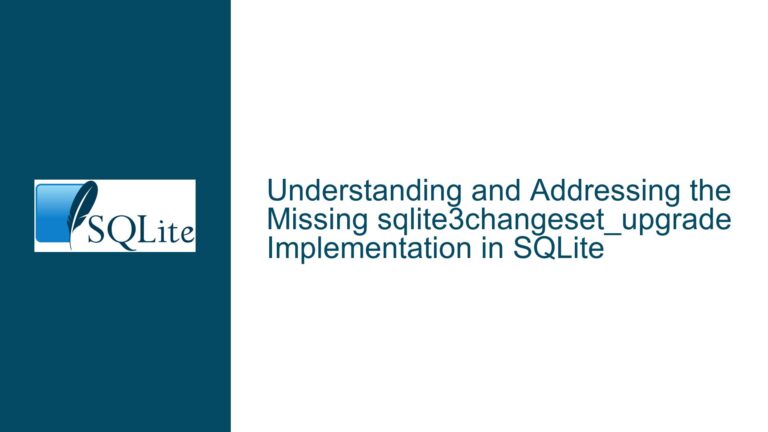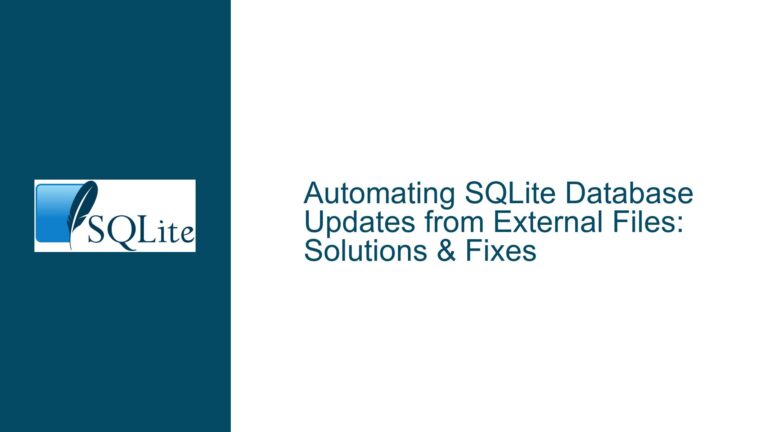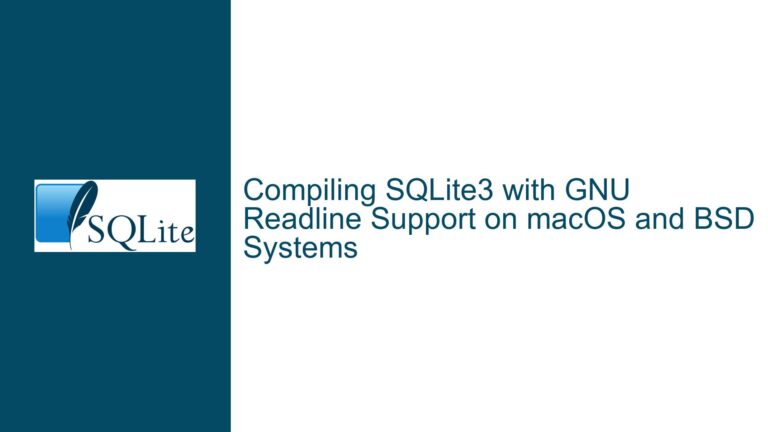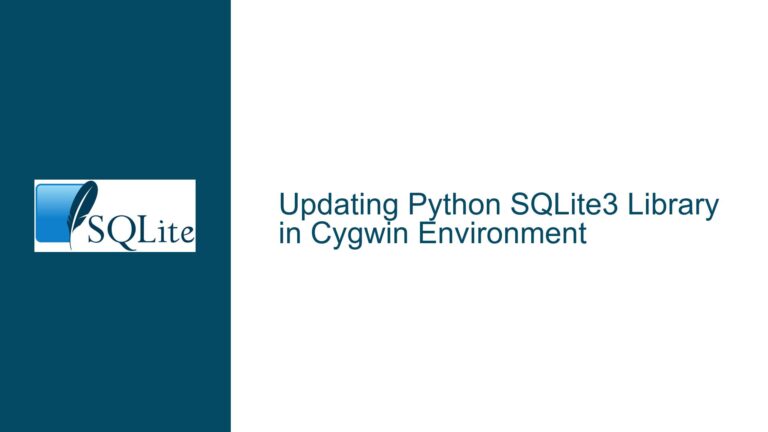Disabling Journal Mode in SQLite In-Memory Databases: Syntax and Verification
Understanding Journal Mode in SQLite In-Memory Databases
SQLite is a lightweight, serverless, and self-contained database engine that is widely used in embedded systems, mobile applications, and desktop applications. One of its key features is the ability to operate entirely in memory, which is particularly useful for scenarios requiring high-speed data access and temporary data storage. However, when working with in-memory databases, certain configurations, such as journal mode, can behave differently compared to file-based databases. Journal mode in SQLite controls how transactions are logged and rolled back, which is critical for data integrity and recovery. Disabling journal mode in an in-memory database can be beneficial for performance optimization, but it requires a precise understanding of SQLite’s PRAGMA syntax and behavior.
The core issue revolves around the correct syntax for disabling journal mode in an in-memory SQLite database and verifying the result of the operation. The problem arises when attempting to use the PRAGMA schema.journal_mode = OFF; command, which results in an exception due to an incorrect schema reference. Additionally, the absence of explicit feedback from the ExecuteNonQuery method complicates the verification process, necessitating alternative methods to confirm the journal mode’s state.
Incorrect Schema Reference in PRAGMA Syntax
The primary cause of the issue is the misuse of the PRAGMA schema.journal_mode = OFF; command. In SQLite, the PRAGMA statement is used to query or modify the internal operations of the SQLite library. The journal_mode PRAGMA specifically controls the journaling behavior, which can be set to values such as DELETE, TRUNCATE, PERSIST, MEMORY, WAL, or OFF. When specifying the schema in the PRAGMA command, the schema name must correspond to an existing database attached to the current connection.
In the context of an in-memory database, the default schema is main. Therefore, using schema.journal_mode results in an "unknown database schema" error because schema is not a valid or attached database name. This error is explicitly indicated by the exception message, which serves as a direct clue to the root cause. The correct approach is to either omit the schema name, defaulting to main, or explicitly use main.journal_mode.
Another layer of complexity arises from the behavior of the ExecuteNonQuery method in the System.Data.SQLite .NET wrapper. This method is typically used for executing SQL commands that do not return result sets, such as INSERT, UPDATE, DELETE, or PRAGMA statements. However, the method does not provide direct feedback about the success or failure of the PRAGMA command. Instead, it returns -1 regardless of the command’s outcome, making it impossible to determine whether the journal mode was successfully disabled based solely on the return value.
Correcting PRAGMA Syntax and Verifying Journal Mode
To resolve the issue, the first step is to correct the PRAGMA syntax by removing the incorrect schema reference. The command should be simplified to PRAGMA journal_mode = OFF; or explicitly written as PRAGMA main.journal_mode = OFF;. This ensures that the PRAGMA statement targets the correct database schema, avoiding the "unknown database schema" error.
Once the correct syntax is applied, the next challenge is verifying the result of the PRAGMA command. Since ExecuteNonQuery does not provide meaningful feedback, an alternative approach is required. One effective method is to issue a separate PRAGMA journal_mode; command to query the current journal mode. This command returns a result set containing the current journal mode value, which can be parsed and examined to confirm the change.
In the provided solution, a DataSet is used to capture the result of the PRAGMA journal_mode; command. The IDbDataAdapter interface is employed to fill the DataSet with the query results. By examining the journal_mode column in the resulting table, the state of the journal mode can be determined before and after issuing the PRAGMA journal_mode = OFF; command. This approach provides a reliable way to verify that the journal mode has been successfully disabled.
Detailed Troubleshooting Steps and Solutions
To comprehensively address the issue, the following steps outline the process of disabling journal mode in an SQLite in-memory database and verifying the result:
Establishing the Connection: Begin by opening a connection to the in-memory database using the appropriate connection string. Two formats are demonstrated:
Data Source=:memory:;Version=3;New=True;andFullUri=file::memory:?cache=shared. Both formats are valid, but the choice depends on the specific requirements of the application, such as whether shared caching is needed.Correcting the PRAGMA Syntax: When issuing the
PRAGMA journal_mode = OFF;command, ensure that the schema name is either omitted or correctly specified asmain. This avoids the "unknown database schema" error and ensures that the command targets the intended database.Executing the PRAGMA Command: Use the
ExecuteNonQuerymethod to execute thePRAGMA journal_mode = OFF;command. Note that the return value of this method will be-1regardless of the command’s success, so it cannot be used to verify the outcome.Querying the Journal Mode: To verify the result, issue a
PRAGMA journal_mode;command. This command returns the current journal mode as a result set, which can be captured using aDataSetand anIDbDataAdapter.Parsing the Result: Examine the
journal_modecolumn in theDataSetto determine the current journal mode. Before issuing thePRAGMA journal_mode = OFF;command, the value should bememory(the default for in-memory databases). After issuing the command, the value should change tooff, confirming that the journal mode has been successfully disabled.Handling Exceptions: Implement appropriate exception handling to manage any potential errors during the execution of the PRAGMA commands or the querying of the journal mode. This ensures that the application can gracefully handle unexpected issues and provide meaningful feedback to the user.
By following these steps, developers can effectively disable journal mode in SQLite in-memory databases and verify the result, ensuring both performance optimization and data integrity. The key takeaway is the importance of precise syntax and the need for alternative verification methods when working with PRAGMA commands in SQLite.






